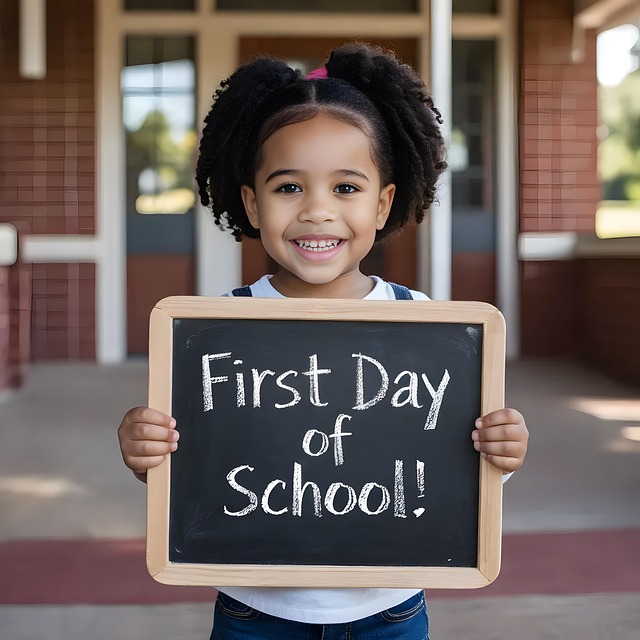It’s that time of year again. Time to start building that classroom community. And we have a first 10 days of school program that will get the year off to the best start possible. Because nothing says “we’ve got this” like fun routines, brave writing, and kids who cheer when it’s read-aloud time.
TL;DR
Use this 10-day plan to launch your community, writing stamina, and SEL—powered by growth mindset picture books. You’ll introduce two anchor routines (Memoir Hearts + Interest Journals), add quick mini-lessons, and weave in low-prep assessments during the first 10 days of school. It’s inclusive, Title I–friendly, and adaptable K–5.
Why this playbook now?
The first two weeks set the tone for everything: safety, risk-taking, and whether students believe their effort matters. Picture books are the perfect on-ramp—fast reads with big feelings and crystal-clear themes. Combine them with two predictable writing routines, and you’ll see kids lean in, talk more, and try harder.
Core routines you’ll use the first 10 days of school, and maybe even longer!
- Memoir Hearts: students sketch small life moments inside sections of a heart, choose one to write about, share with optional “look/no look” choice, then color that section.
- Interest Journals: shared spiral notebooks labeled by student passions (e.g., “Manga,” “Pets,” “Soccer,” “Coding”). Kids add entries or replies, building authentic audience and voice.
SEO note: I’ll use growth mindset picture books five–six times below so this guide is easy for educators to find when they need it most.
The Read-Aloud Stack (mix & match by grade)
- All Are Welcome — Penfold/Kaufman (community & belonging)
- The Invisible Boy — Trudy Ludwig (empathy & inclusion)
- The Rabbit Listened — Cori Doerrfeld (handling big feelings)
- Ish — Peter H. Reynolds (progress over perfection)
- Beautiful Oops! — Barney Saltzberg (mistakes → creativity)
Helpful background reads:
- CASEL: SEL Core Competencies
- Edutopia: What Growth Mindset Is/Isn’t
- Mindset Works (Carol Dweck overview)
These pair beautifully with growth mindset picture books in mini-lessons and family newsletters.
The First 10 Days of School: Scripted (but flexible)
Day 1 — All Are Welcome Here
- Read-aloud: All Are Welcome
- Mini-lesson: Community norms = how we make sure everyone can learn (noise levels, materials, “Oops → Next Step” language).
- Routine: Launch Memoir Hearts. Model drawing 5 tiny memory sketches.
- Share: “Look/No Look” shares (students choose whether peers make eye contact).
- Exit ticket: One way you can help someone feel welcome.
Day 2 — Seeing the Unseen
- Read-aloud: The Invisible Boy
- Mini-lesson: Specific compliments vs. “good job.” Build a “Kind Words Menu.”
- Routine: Choose one heart square, quick write (5–8 minutes).
- Protocol: “I Like / I Wonder / Try Adding…” sentence stems.
- Home-to-school bridge: Invite families to share a “welcome story” from their lives.
Day 3 — When Feelings Are Loud
- Read-aloud: The Rabbit Listened
- Mini-lesson: “Not yet” language. Try: “I can’t do this… yet.”
- Routine: Memoir Hearts quick write #2.
- SEL tool: Calm corner choices card (breathe, draw, stretch, water).
- Assessment snapshot: Star one sentence that grew from yesterday’s feedback.
Day 4 — Ish > Perfect
- Read-aloud: Ish
- Mini-lesson: Perfectionism vs. persistence.
- Routine: Launch Interest Journals. Build a class list of interests; label 15–20 spirals (e.g., “Manga,” “Pets,” “Science Experiments,” “Video Games”).
- Write: 8–10 minutes in any journal or reply to a peer.
- Call-out: “We are an ish class”—celebrate attempts!
Day 5 — Oops to Awesome
- Read-aloud: Beautiful Oops!
- Mini-lesson: Turn errors into drafts. Fold/tear/ink “oops” page → make art.
- Routine: Memoir Hearts #3 from an “oops” memory; underline a sensory detail.
- Community: Kindness roles: Spotter (finds helpers), Echo (revoices ideas), Builder (“yes, and…” adds on).
- Reflection: Which role did you try?
Day 6 — Voices & Choices
- Read-aloud: Student choice from Monday–Friday stack (vote).
- Mini-lesson: Choice makes writing stronger (topic, tool, partner).
- Routine: Interest Journals—teacher model: short entry + a question.
- Share: Gallery walk with sticky-note feedback (one per piece).
- Quick check: Circle where you used “not yet.”
Day 7 — From Me to We
- Read-aloud: Pair any title with a short video/song about teamwork.
- Mini-lesson: Collaboration norm = “Yes, and…” (build, don’t bulldoze).
- Routine: Partner “Pass-the-Story” (2 minutes each, 3 rounds).
- Craft move: Transitions (then, suddenly, meanwhile).
- Anchor chart: Our favorite “Yes, and…” sentence starters.
Day 8 — Brave Sharing
- Read-aloud: Teacher favorite (model vulnerability: a time you grew).
- Mini-lesson: How to give feedback that grows writers (ask, don’t tell).
- Routine: Memoir Hearts #4; choose one piece for revision.
- Conferring: 1:1 or triads using checklists (voice, details, structure).
- Home connection: Send a family note describing our growth mindset picture books focus.
Day 9 — From Draft to Showcase
- Read-aloud: Reread class-favorite title to notice structure and craft.
- Mini-lesson: Revise with purpose (add a moment, clarify a feeling, swap a verb).
- Routine: Finalize one memoir; “Author’s Note” about what you learned.
- Tech option: Record 60–90 second audio of the author reading.
- Community job: Curators arrange pieces for tomorrow’s celebration.
Day 10 — Celebration + Next Steps
- Read-aloud: Quick revisit to Ish—affirm growth.
- Showcase: “Hearts & Interests” Museum (stations: reading, listening, feedback wall).
- Reflection: “Before/After” sentence frames about writing bravery.
- Set the arc: Share the unit calendar; keep Interest Journals open all year.
- Family newsletter blurb: Explain how growth mindset picture books shaped routines and how families can echo “not yet” language at home.
Pro tip: Move beyond the first 10 days of school. Keep using growth mindset picture books whenever stamina dips or a new unit starts. They’re the reset button your future self will thank you for.
Planning at a Glance (copy to your planner)
- Materials: 15–20 spiral notebooks, large heart templates (or draw your own), sticky notes, crayons/markers.
- Walls: Kind Words Menu, “Yes, and…” starters, Calm Corner choices, Writing Process visual.
- Daily timing (approx.): 10–12 min read-aloud → 6–8 min mini-lesson → 10–15 min writing → 5–7 min share/reflect.
Differentiation & Inclusion
- Multilingual learners: Provide bilingual sentence stems; allow oral storytelling before writing; pair with visuals from growth mindset picture books.
- Emergent writers: Let students label drawings, use dictation, or voice-type.
- Neurodiversity: Offer “look/no look” sharing, noise-reduction options, and clear routines.
- Title I realities: Everything here works with basic supplies; journals can be reused composition books or scrap paper stapled into packets.
Quick Assessments You’ll Actually Use
- Traffic-light dots on the door (“got it / almost / help me”),
- Two Stars & a Wish sticky notes after gallery walks,
- Mini rubrics (1–3 scale) for: effort, details, collaboration, and revision.
- Conference notes: one glow, one grow—keep it to 30 seconds per student.
Book & Resource Links (helpful for you and families)
- CASEL: SEL Core Competencies
- Edutopia: What Growth Mindset Is/Isn’t
- Mindset Works (Carol Dweck overview)
- Ish by Peter H. Reynolds
- Beautiful Oops! by Barney Saltzberg
- The Invisible Boy by Trudy Ludwig
- The Rabbit Listened by Cori Doerrfeld
- All Are Welcome by Alexandra Penfold & Suzanne Kaufman
Share these with families so the language of growth mindset picture books lives beyond your four walls, wether it’s the first 10 days of school or not.
FAQ
What grades does this fit?
K–5. Shorten writing time for K–1, expand partner routines and revision targets for grades 3–5.
How do I keep it from eating my whole ELA block?
Cap read-aloud + lesson at 20 minutes. Writing + share in 15–20. It’s the predictability, not the length, that builds momentum.
Can I swap titles? I don’t have that book.
Absolutely. The magic is the routine. Any strong community/effort-focused read will work. Keep rotating growth mindset picture books as mirrors and windows for your students.
What about assessment “grades”?
What about assessment “grades”?
Use participation/effort early on. Move to simple checklists in Week 3. Protect and build the joy; grading tightens later.
Conclusion
The first 10 days of school should be about building your classroom community. You don’t need a cart full of fancy tools to launch a powerful year…just intention, a few growth mindset picture books, and two fun routines that make every child feel seen. If you’d love to take these lessons to the next level, I offer high energy, student-centered author visits (virtual or in-person) that align perfectly with this playbook. Reach out. I’m happy to help your community start the year brave, curious, and wonderfully ish.




